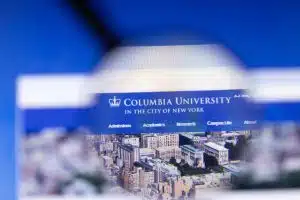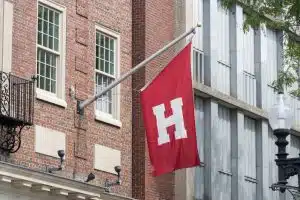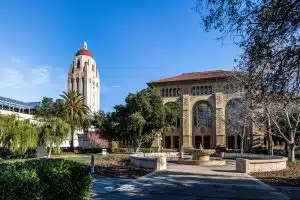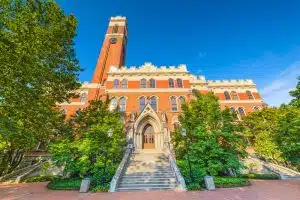What are the Most Selective Colleges?
Gaining admission to the most selective colleges is a highly competitive process that requires careful planning and execution. These institutions are known for their rigorous academic programs, exceptional faculty, and vibrant communities. Are you aiming for a spot at one of these elite schools but unsure how to make your application stand out? Keep reading for insightful tips that will guide you through the complexities of applying to highly selective colleges.
Understanding College Selectivity
College selectivity, at its core, is the measure of a college’s admission standards, indicating the difficulty level of gaining admission. It is a broad concept encapsulating a variety of underlying factors that we will delve into more deeply in the following sections.
What is College Selectivity?
College selectivity is assessed based on the percentage of applicants who are accepted. Colleges that accept a small proportion of applicants are usually referred to as ‘highly selective’ or ‘most selective’ colleges. It does not solely reflect the academic rigor or reputation of the institution, but rather, it is a measure of the institution’s exclusivity.
However, college selectivity is not just about numbers. It is a multifaceted concept that takes into account various aspects of the college admissions process. These aspects include the academic qualifications of applicants, the institution’s capacity to accommodate students, and the overall competitiveness of the applicant pool.
Moreover, college selectivity is influenced by factors beyond the admissions process. The reputation of the institution plays a significant role in determining selectivity. Colleges with a long-standing history of excellence and a strong academic reputation tend to attract a larger pool of applicants, making them more selective.
Additionally, the unique programs offered by an institution can also contribute to its selectivity. Colleges that have specialized programs or majors that are highly sought after may receive a higher number of applications, leading to increased selectivity.
Location can also impact college selectivity. Colleges situated in desirable locations, such as major cities or scenic areas, may attract a larger applicant pool, making them more selective in their admissions process.
Furthermore, the availability of resources and financial aid can influence college selectivity. Institutions that are able to offer generous financial aid packages and provide ample resources for students may attract a larger pool of applicants, leading to increased selectivity.
Lastly, extracurricular offerings can also play a role in college selectivity. Colleges that have a wide range of extracurricular activities, clubs, and organizations may attract students who are seeking a vibrant campus life, thereby increasing their selectivity.

Factors that Determine College Selectivity
The factors that determine college selectivity often include historical application data, the academic profile of admitted students, and the institution’s capacity, among others. Colleges regularly assess these factors to determine selectivity, as they directly affect the student population and the institution’s reputation.
Historical application data is an essential factor in determining college selectivity. Admissions offices analyze past application trends, including the number of applications received, the acceptance rate, and the yield rate (the percentage of admitted students who choose to enroll). This data provides valuable insights into the competitiveness of the applicant pool and helps colleges make informed decisions regarding selectivity.
The academic profile of admitted students also plays a crucial role in determining college selectivity. Admissions officers consider factors such as high school GPA, standardized test scores, and the rigor of the applicant’s high school curriculum. These academic indicators help colleges assess the potential success of applicants and determine their selectivity accordingly.
The institution’s capacity is another factor that influences college selectivity. Colleges have a limited number of spots available for incoming students, and they must carefully manage their enrollment to maintain a balanced student population. Factors such as available housing, classroom space, and faculty resources all contribute to the institution’s capacity and, consequently, its selectivity.
Furthermore, colleges consider other factors that go beyond raw numbers when determining selectivity. The institution’s reputation, as mentioned earlier, can significantly impact selectivity. A college with a strong reputation for academic excellence and a history of producing successful graduates may receive a larger number of applications, leading to increased selectivity.
In conclusion, college selectivity is a complex concept that encompasses various factors. It is not solely determined by the number of applicants accepted but also takes into account the institution’s reputation, unique programs, location, available resources, financial aid availability, and extracurricular offerings. Understanding college selectivity can provide prospective students with valuable insights into the admissions process and help them make informed decisions about their college choices.
The Importance of Selectivity in Higher Education
While the concept of selectivity might seem like a statistical phenomenon, it holds immense significance in higher education. The process of selecting students for admission to colleges and universities is not merely about numbers and statistics; it is about creating an environment that fosters academic excellence, personal growth, and future success.
Attending a highly selective college often equates to having access to rigorous academic programs, renowned faculty, and motivated peers. This atmosphere of academic focus and pursuit of excellence can have a profound effect on a student’s learning experience. Students are constantly challenged to push their intellectual boundaries, engage in critical thinking, and explore new ideas. The rigorous coursework and high academic standards set by these institutions ensure that students are well-prepared for the challenges they will face in their future careers.
Additionally, selective colleges frequently boast a lower student-to-faculty ratio, allowing for personalized mentoring and guidance. Professors have more time and resources to dedicate to each student, providing individualized attention and support. This close relationship between students and faculty fosters a strong sense of community and collaboration, creating an environment where students can thrive academically and personally.
These institutions also tend to offer more extensive resources, research opportunities, and capstone projects that augment the academic experience even further. Students have access to state-of-the-art facilities, well-equipped laboratories, and libraries with vast collections of books and research materials. Engaging in research projects allows students to apply their knowledge, develop critical research skills, and contribute to the advancement of knowledge in their field of study.
The selectivity of an institution often influences the future career opportunities for its graduates. Employers and graduate schools sometimes give preference to candidates from highly selective colleges. The reputation and prestige associated with these institutions can open doors to a wide range of career options. Graduates from selective colleges are often sought after by top companies and organizations, who recognize the rigorous academic training and exceptional skills developed during their time at these institutions.
The strong alumni networks, career services, and on-campus recruiting events provided by these schools often pave the way for fruitful careers. Alumni are often eager to give back to their alma mater, offering mentorship, internship opportunities, and job placements to current students and recent graduates. Career services offices provide guidance and support in resume writing, interview preparation, and job search strategies, giving students a competitive edge in the job market.
In conclusion, selectivity in higher education is not just about admitting a certain number of students based on their academic achievements; it is about creating an environment that nurtures intellectual growth, fosters personal development, and opens doors to a world of opportunities. The impact of selectivity extends far beyond the college years, shaping the academic, professional, and personal trajectories of students for years to come.

Criteria for Selective College Admissions
The admissions process for selective colleges can be highly competitive, necessitating exceptional preparation and effort from applicants. In order to gain a better understanding of the criteria that these colleges consider, let’s delve into the various factors that play a role in the decision-making process.
Academic Achievements
High grades and standardized test scores can play a critical role in the admissions process. Selective schools generally prefer students who have demonstrated academic excellence throughout high school, and a strong performance in AP or IB courses is often highly valued. These courses are designed to challenge students and provide them with a taste of college-level coursework.
However, it’s important to note that a perfect GPA or SAT score does not guarantee admission, as these colleges review applications holistically. Admissions officers take into account the rigor of the applicant’s high school curriculum, the competitiveness of their school, and the context in which their achievements were accomplished.
Extracurricular Activities and Leadership Roles
An applicant’s involvement in extracurricular activities and their capacity to assume leadership roles can also be influential. Admission officers often seek evidence of initiative, commitment, and well-roundedness through such involvement.
Whether it’s participation in sports, theater, volunteering, or leading a school club, universities value each accomplishment in its unique context. They want to see that applicants have pursued their passions, developed skills, and made a positive impact on their communities.
Personal Essays and Interviews
The personal essay and interview stages provide colleges with a glimpse into the applicant’s personality, passion, and potential to contribute to the school community. These stages are an opportunity for applicants to go beyond their academic and extracurricular achievements and showcase their unique qualities.
Preparing for these stages requires introspection, research, and practice. It’s an opportunity for students to share their story, values, and aspirations, illustrating why they’d be a good fit for the institution. Admissions officers are looking for authenticity, self-awareness, and a genuine connection to the college’s mission and values.
During interviews, applicants should be prepared to answer questions about their experiences, goals, and reasons for choosing the college. They should also be ready to ask thoughtful questions that demonstrate their interest in the institution.
Overall, the admissions process for selective colleges is multifaceted and considers a wide range of factors. While academic achievements, extracurricular activities, and personal essays are important, it’s crucial for applicants to remember that each college has its own unique criteria and values. Therefore, it’s essential to research and understand the specific requirements and expectations of each institution to maximize the chances of a successful application.

Top Selective Colleges in the US
Across the country, one can find a variety of institutions known for their selective admission processes. These colleges and universities have gained a reputation for their rigorous academics, prestigious faculty, and extensive resources, making them highly sought after by students from all over the world.
Ivy League Institutions
The Ivy League schools are the embodiment of selectivity and academic excellence. Comprising eight Northeast universities, including Harvard, Princeton, and Columbia, these institutions have a long-standing history of producing some of the brightest minds in the world.
While they may be steeped in tradition, these schools continue to innovate and are often at the forefront of research and academic advancement in various fields. From groundbreaking discoveries in medicine to revolutionary advancements in technology, Ivy League institutions are consistently pushing the boundaries of knowledge.
Liberal Arts Colleges
Selective liberal arts colleges like Amherst, Swarthmore, and Williams College are likewise renowned for their academic rigor and comprehensive curriculum. These institutions prioritize undergraduate education, offering small class sizes and a close-knit campus community that fosters intellectual growth and personal development.
With a strong emphasis on critical thinking and interpersonal skills, liberal arts colleges prepare students to excel in a wide range of careers. The comprehensive curriculum allows students to explore various disciplines, encouraging them to become well-rounded individuals with a deep understanding of the world.
Public Universities
On the public side, universities such as UC Berkeley and the University of Michigan are known for their selectiveness. These institutions, supported by state funding, are able to provide a high-quality education at a more affordable cost for in-state students.
Public universities often boast large and diverse student populations, offering a myriad of majors and research opportunities. From engineering to business, these institutions cater to a wide range of academic interests, ensuring that students have the resources and support they need to succeed.
Overall, the top selective colleges in the US offer students a unique and enriching educational experience. Whether it’s the Ivy League institutions with their rich history and academic prestige, the liberal arts colleges with their focus on critical thinking and personal growth, or the public universities with their accessibility and diverse opportunities, these institutions continue to shape the future leaders of tomorrow.

Navigating the Application Process for Selective Colleges
Applying to selective colleges can be a complex and daunting process, needing thoughtful preparation.
Preparing a Competitive Application
Before starting the application process, students should thoroughly research their prospective colleges, understand their requirements, and reflect on how their experiences align with the school’s mission and values. Crafting a compelling personal statement, getting robust recommendation letters, and effectively showcasing one’s academic and extracurricular accomplishments can make the application stand out.
In addition, demonstrating interest by attending college fairs, contacting admissions officers, and participating in campus visits can have a positive impact on one’s application.
Understanding Early Decision and Early Action
Early Decision (ED) and Early Action (EA) are application options often offered by selective universities. These options allow students to submit their applications ahead of the regular deadline and receive an earlier response.
However, these decisions can vary in their level of commitment. ED is binding, meaning students must attend the college if admitted, while EA is non-binding. Understanding these nuances can help students strategize their application timelines effectively.
In conclusion, while the journey to selective colleges in the US could be strenuous, the rewards are plentiful. It’s a journey of self-growth that fosters emotional maturity and resilience, and the end result could be an educational experience that truly paves the way for lifelong success.




































